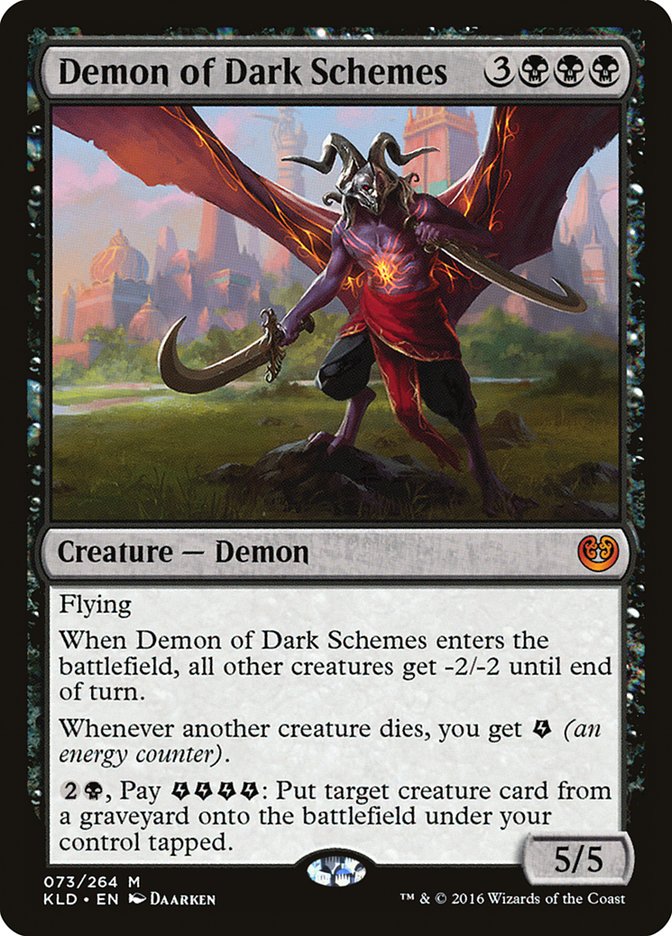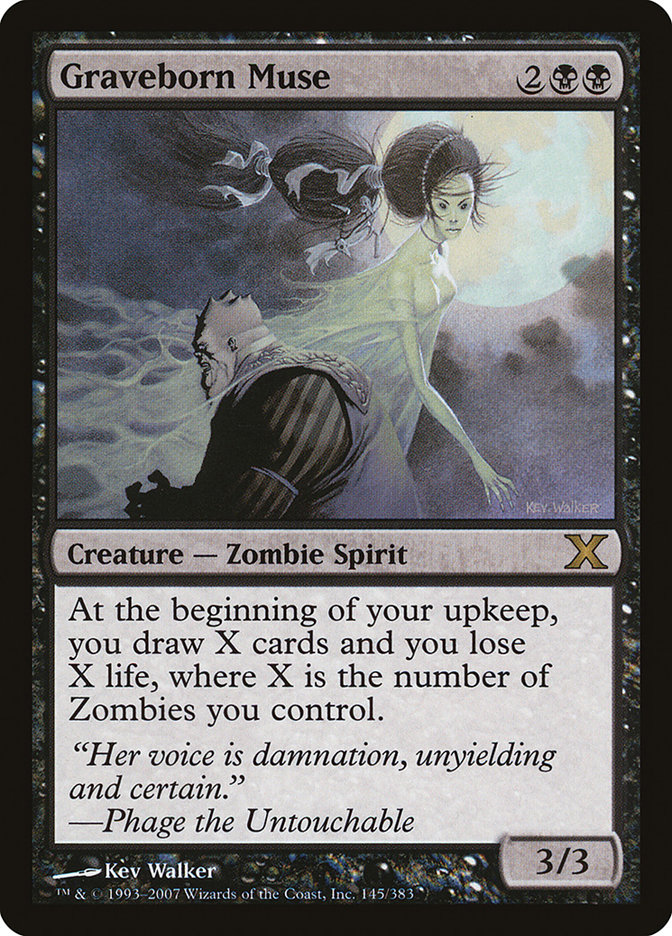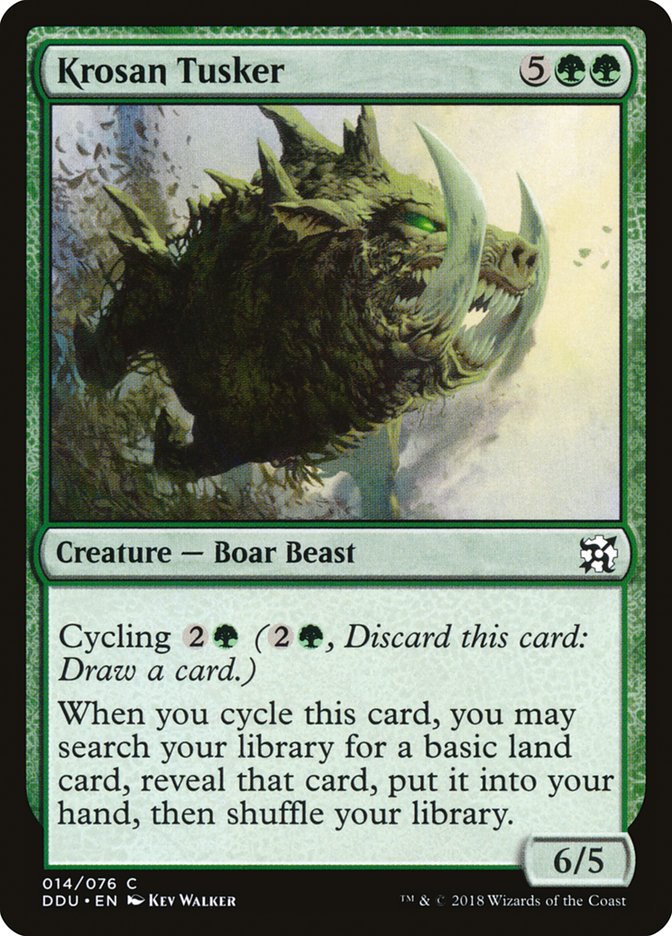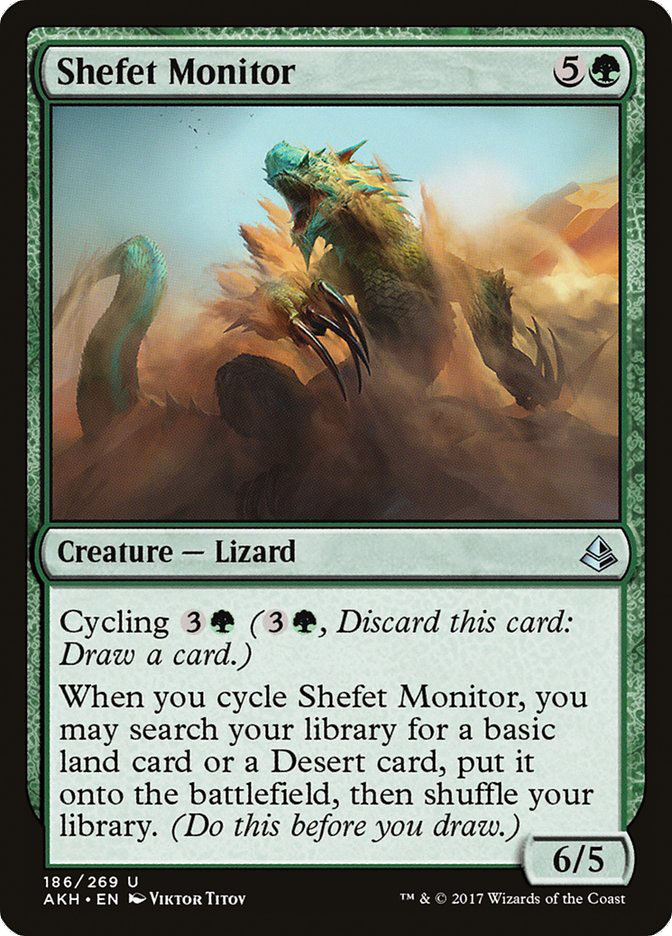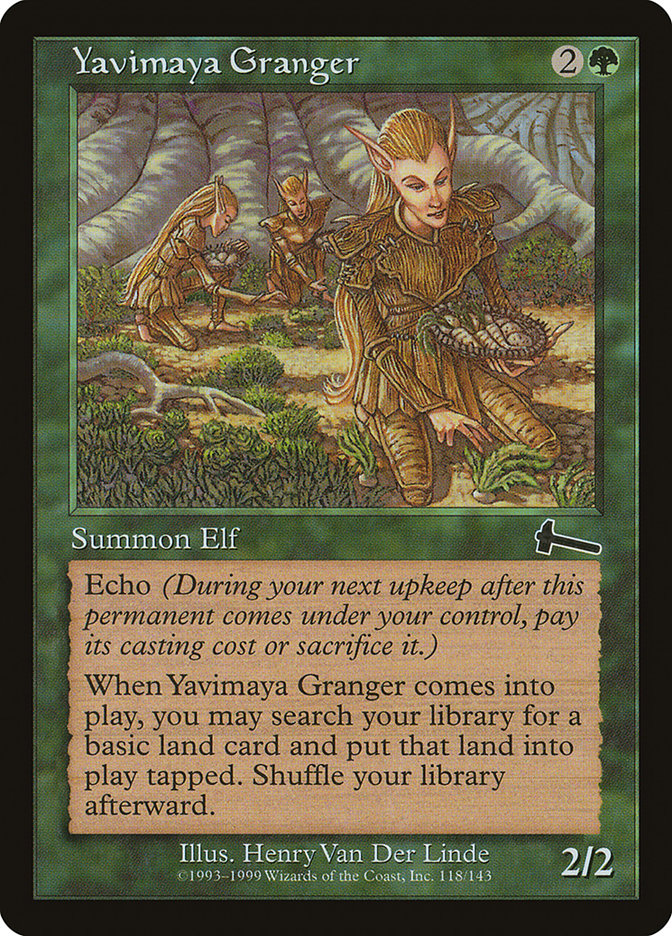You’ve seen some of the compelling output from the other five Commander Advisory Group (CAG) members, and now it’s time to wrap the first round with one from Adam “The Stybs” Styborski. When I introduced the CAG I told you that Stybs’ play style is closest of them to my own; checking out this deck, you’ll see evidence that’s definitely the case.
It turns out that we have more in common than a Commander play style. When I asked him what I should listen to while writing it up, he mentioned three pretty righteous tunes: Kashmir by Led Zeppelin, Hold the Line by Toto, and Reelin’ In the Years by Steely Dan. He then pointed me to his Spotify playlist called “Time to Raid,” which is replete with personal favorite bands such as Kansas, Deep Purple, and Rush. Rocking and writing is definitely a thing.
I’ll let Adam tell you about the deck in some of his own words, show you the list, and then offer up my comments.
“Pro Tour Pharika” was a deck inspired several years into my Commander obsession. Challenged to make a deck using one of the new God cards right before Pro Tour Journey into Nyx, I chose Pharika, God of Affliction for exactly the reasons you see in the deck: graveyard power and a plodding, but inevitable, pace to end games.
And I’ve never taken the deck apart since.
Pharika has the unusual ability to remain almost invisible on the battlefield. Opponents rarely seem to mind the ability to create a 1/1 deathtouch token, and as a 5/5 indestructible creature she’s a minor nuisance compared to what an Eldrazi can do. It’s why I like her: I can take some time to set up my graveyard and manipulate opponents and rarely be contested along the way.
Pharika’s ability can be used at instant speed, and can be used when she’s just an enchantment. Surprising the occasional opponent by giving someone else blockers (courtesy of creatures in the defending player’s graveyard) is a nice touch, but keeping other graveyards clear of creatures ensures our Living Death is better every time. It’s packed with recursion. Looping our creatures while our opponents can’t do the same adds up over time.
Getting in chip damage isn’t a winning strategy, so I lean on other ways to push through damage. Korozda Guildmage can both grant menace (surprisingly effective in Commander) and convert a huge creature into a pile of Saprolings. Jarad, Golgari Lich Lord makes an Apocalypse Demon or Lord of Extinction into a massive Fireball for everyone else. Looping Kokusho, the Evening Star a few times quickly drains opponents out. And Whip of Erebos not only gives us an extra shot with creatures but pads our life total the whole time.
Naturally, a deck looking to the graveyard for staying power enjoys staples like Survival of the Fittest, Journey to Eternity, and Birthing Pod. But I also like the surprise factor of cards like Return from the Underworld (which as an instant in the end step before your turn is awesome), Victimize, and Thrilling Encore (another instant).
There’s no Sol Ring here because there’s never a turn I’d want to draw it after the first or second. Instead, creatures that find lands and (helpfully) put themselves into the graveyard work better. From Diligent Farmhand and Sakura-Tribe Elder right up the curve to Krosan Tusker, Shefet Monitor, and (my favorite in here) Yavimaya Granger, it’s easy to stock up the graveyard while ramping into the endgame.
Over the years I’ve applied and tested numerous ideas on the deck. Most recently, it was from fellow CAG member Josh Lee Kwai and his fellow Command Zone host Jimmy Wong suggesting more one-for-one instant-speed answers and a lower mana curve as ways to power up a Commander deck. Immediately after cutting multiple four-or-more-drops for one-, two- ,and three-mana cost spells that function as removal, the deck felt better.
Having a go-to deck that’s great with newer Commander players and the relaxed Commander groups I play with more regularly, and is always exciting to play at conventions, makes “Pro Tour Pharika” the best example of the way I enjoy playing Commander. While my other decks (like Kefnet the Mindful and Breya, Etherium Shaper) are powerful and exciting for their ability to win games, I’m still thrilled to keep nudging and updating my Pharika deck with even more ideas in the future.
Creatures (40)
- 1 Sakura-Tribe Elder
- 1 Solemn Simulacrum
- 1 Kokusho, the Evening Star
- 1 Wood Elves
- 1 Krosan Tusker
- 1 Graveborn Muse
- 1 Eternal Witness
- 1 Bone Shredder
- 1 Yavimaya Elder
- 1 Fierce Empath
- 1 Yavimaya Granger
- 1 Diligent Farmhand
- 1 Civic Wayfinder
- 1 Indrik Stomphowler
- 1 Big Game Hunter
- 1 Seedguide Ash
- 1 Shriekmaw
- 1 Woodfall Primus
- 1 Lord of Extinction
- 1 Acidic Slime
- 1 Grave Titan
- 1 Mitotic Slime
- 1 Massacre Wurm
- 1 Dawntreader Elk
- 1 Jarad, Golgari Lich Lord
- 1 Korozda Guildmage
- 1 Deathrite Shaman
- 1 Nighthowler
- 1 Erebos, God of the Dead
- 1 Pharika's Mender
- 1 Reclamation Sage
- 1 Sidisi, Undead Vizier
- 1 Den Protector
- 1 Greenwarden of Murasa
- 1 Skullwinder
- 1 Demon of Dark Schemes
- 1 Noxious Gearhulk
- 1 Shefet Monitor
- 1 Apocalypse Demon
- 1 Golgari Findbroker
Lands (36)
Spells (23)
- 1 Vampiric Tutor
- 1 Living Death
- 1 Demonic Tutor
- 1 Natural Order
- 1 Victimize
- 1 Grim Feast
- 1 Survival of the Fittest
- 1 Greater Good
- 1 Pernicious Deed
- 1 Putrefy
- 1 Maelstrom Pulse
- 1 Birthing Pod
- 1 Beast Within
- 1 Rescue from the Underworld
- 1 Hero's Downfall
- 1 Whip of Erebos
- 1 Seasons Past
- 1 Eldritch Evolution
- 1 Rishkar's Expertise
- 1 Journey to Eternity
- 1 Thrilling Encore
- 1 Status
- 1 Assassin's Trophy

Obviously, anything with 40+ creatures in it is going to get my attention. I’m a fan of both his choices from more commonly used creatures and outside-the-box selections. Seedguide Ash has become well-known enough that it has to go into the former category. You’ll never get an argument from me about playing Lord of Extinction, Massacre Wurm, Yavimaya Elder, or Woodfall Primus. A few of the less-common choices really get my motor running.
There’s a little bit of genius in slipping an energy card into the deck. Energy isn’t a sub-theme, just a single-card strategy. With the killing that the deck can do, the energy will pile up. Even if Demon of Dark Schemes gets killed, the energy is still there for when the creature inevitably gets resurrected.
Sure, you see it in every Zombie deck, but in a deck in which Sidisi, Undead Vizier is the only other Zombie (plus the ones Grave Titan spits out), you’re not going to kill yourself with Graveborn Muse.
They’re too well-known to call Hidden Gems, but neither is exactly a staple, either. What’s good about them in a deck like this is that they’re big beaters when you recur them.
Like with Boneshredder, I enjoy how you don’t have to do any work to get the card into the graveyard for later use—just don’t pay the echo cost. It does the work you want and then goes to the place where it can do more.
As far as the spells go, there are many of the usual suspects, like the always-popular Greater Good. It’s also nice to see someone again playing Victimize. I feel like I haven’t seen it on too many lists recently, which I find a shame. The card is just good. The super-techy card in the deck is Grim Feast. It’s not expensive to cast (or to buy, check it out!), and it’s going to gain you loads and loads of life. Speaking of lifegain, I’d play Whip of Erebos just because it gives my creatures lifelink. I’m not all that keen on exiling my own creatures, but I suspect that the activated ability on Whip of Erebos might end up getting that Lord of Extinction back for the big hit. If you kill one person with a lifelinked Lord of Extinction, you’ll probably have enough life to withstand a few big hits to your face. And I object to the notion that I like this deck so much simply because Living Death is in it. Strenuously object.
I have a small quibble with the point Adam brings up about Josh’s and Jimmy’s thoughts on more one-for-ones. I can’t dispute Adam’s assessment that the deck feels better (it seems silly to argue about someone else’s feelings). What I can suggest is that it’s likely only a feeling. Cutting some expensive things for lower-cost stuff means you’ll be able to play them more often, which will in turn generate the feeling that you’re having more impact on the game.
I suppose it all depends what we mean by “more.” I’ll concede that you’re impacting the game more often. I’m not so sure you’re impacting it to a greater degree, which I find to be the important point. One-for-ones have to be really special in order to have a place in Commander, even more so in longer games. If you’re playing games that last only five or six turns, Josh and Jimmy’s point is probably on strong ground, because it’s all about slipping in through a very small window. In games that are going ten-plus turns, especially those in which everyone is still playing, one-for-ones lead to significantly diminishing returns. I’ll look forward to debating the topic with Adam, Josh, and/or Jimmy when I next see them.
Some folks might be critical of a deck like this because it contains too many staples. I’m not one of them. There is a reason that some cards are staples, and it’s not necessarily just about being good, but being enjoyable to play with. Sure, a card like Survival of the Fittest can be used to just tutor up combo pieces and go off, but the flip side is that it can also be used as a toolbox card, getting an answer to the current board state or some important element of it. Finding the right middle ground between the two spots is one of the format’s ongoing anxieties. Repeatability and redundancy win more games of Magic, no question.
Consider other Eternal formats. Their fan bases are zealous but comparatively small. They’re extremely skill-testing due to the aforementioned redundancy; players have to find the slimmest of margins of difference to win. From where I sit, what limits their appeal (setting aside the investment issue for now) is that sameness. Please don’t take this as a criticism of Vintage and Legacy; they’re arguably the most compelling Magic formats to watch, especially for the heavily invested fan, because so much rides on every single decision and there is a great deal of action packed into a relatively small space. And not everything has to have the broadest possible appeal.
Greater variance, however, leads to more different kinds of interesting games (to a certain point; complete randomness is just random). Even when a Commander deck has a bunch of staples in it, the way the creator crafts their deck around those cards makes a huge difference, so I appreciate when a deck-builder can work with them in a fun and compelling way, which is what I think Stybs has accomplished here. I would absolutely look forward to sitting down with him and this deck.
Question of the Week
This week’s question came from someone in person.
“What do you think of the two cards previewed for Modern Horizons with respect to Commander?”
Cabal Therapist won’t have that much impact in the format. My primary uses for it would be to have a sacrifice outlet that doesn’t cost mana and to make sure that the person I want to attack doesn’t have any combat tricks.
Serra the Benevolent is a card you’ll be seeing lots of and for good reason. It will be all about the race to that ultimate, which won’t take very long. Because it starts with four counters, has a +2 ability, and only needs six to activate the third ability, the rest of the table has only a single turn to deal with it. Worship in an emblem will be very powerful indeed, because you’ll need more than just a Disenchant.
Check out our comprehensive Deck List Database for lists of all my decks:
SIGNATURE DECKS
Purple Hippos and Maro Sorcerers; Kresh Into the Red Zone; Halloween with Karador; Dreaming of Intet; You Did This to Yourself.
THE CHROMATIC PROJECT
Mono-Color
Heliod, God of Enchantments; Thassa, God of Merfolk; Erebos and the Halls Of The Dead; Forge of Purphoros; Nylea of the Woodland Realm; Karn Evil No. 9.
Guilds
Lavinia Blinks; Obzedat, Ghost Killer; Aurelia Goes to War; Trostani and Her Angels; Lazav, Shapeshifting Mastermind; Zegana and a Dice Bag; Rakdos Reimagined; Glissa, Glissa; Ruric Thar and His Beastly Fight Club; Gisa and Geralf Together Forever.
Shards and Wedges
Adun’s Toolbox; Angry, Angry Dinos; Animar’s Swarm; Borrowing Stuff at Cutlass Point; Ikra and Kydele; Karrthus, Who Rains Fire From The Sky; Demons of Kaalia; Merieke’s Esper Dragons; Nath of the Value Leaf; Queen Marchesa, Long May She Reign; Muldrotha, Speaking Primely; Queen Marchesa’s Knights; Rith’s Tokens; The Mill-Meoplasm; The Altar of Thraximundar; The Threat of Yasova; Zombies of Tresserhorn.
Four-Color
Yidris: Money for Nothing, Cards for Free; Saskia Unyielding; Breya Reshaped; Yidris Rotisserie Draft Deck.
Five-Color
Partners
Tana and Kydele; Kynaios and Tiro; Ikra and Kydele.
THE DO-OVER PROJECT
Adun Oakenshield Do-Over; Animar Do-Over; Glissa Do-Over; Karador Do-Over; Karador Version 3; Karrthus Do-Over; Kresh Do-Over; Steam-Powered Merieke Do-Over; Lord of Tresserhorn Do-Over; Mimeoplasm Do-Over; Phelddagrif Do-Over; Rith Do-Over; Ruhan Do-Over.
If you’d like to follow the adventures of my Monday Night RPG group (in a campaign that’s been alive since 1987) which is just beginning the saga The Lost Cities of Nevinor, ask for an invitation to the Facebook group “Sheldon Menery’s Monday Night Gamers.”


